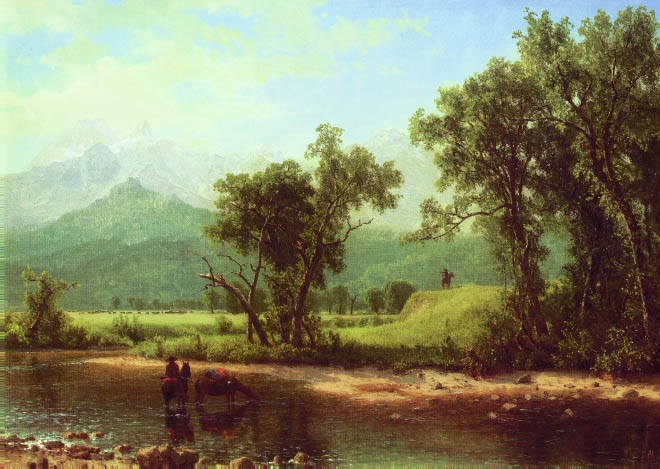
Wind River Mountains, 1860, Albert Bierstadt
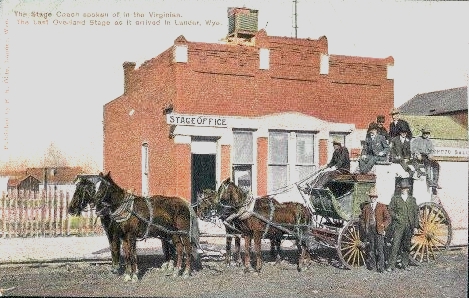
Lander Stage, July 1906
Photo is of the last stage from Rawlins before service was discontinued with the advent of railroad passenger service from Casper to Shoshoni. The stage station was constructed in 1895 by George W. Scott who maintained a photgraphy studio next door. The caption on the photo indicates that this is the stage spoken of in The Virginian. Scant mention of stages is made in Wister's novel. The longest mention is of Molly's 30 hour ride from Rock Creek during which the second driver had imbibed too much and managed to overturn the stage whilst fording a creek. Mention is also made of a "kid" stage driver from Point of Rocks and note is made that the Bishop arrived by stage. Lander, itself, was well served by stage lines. Service was available to Thermopolis and from there north to Meeteetse and Cody. Service was also available east to Casper and south to Rock Springs. As was noted by Julian Ralph in 1893, discussed with regard to Cheyenne, prior to the coming of the railroads stage transportation was the only means of transportation:
"Excepting Idaho, it is the newest of the States in point of development. It waits upon the railroads to open it up. The Union Pacific Company has done this for the southern part, but until three years ago no other railway entered the State. Even now the other roads merely tap its eastern and northern edges. The Burlington and Missouri Railroad of the Chicago, Burlington and Quincy system is pushing its rails into the northeastern part, having come up from Nebraska. It is finished to the Powder River in Sheridan County, and is graded to Sheridan which is a region of rich agricultural promise. This railroad must soon, one would think, push on to the Big Horn country, as we shall see. The Fremont, Elkhorn, and Misouri Valley Railroad, of the Chicago and Northwestern system is also building into the eastern part of the State, and so a beginning is made. But the old-fashioned stage lines are far more numerous than the railroads, and are the sole links between the railways and many interior communities."
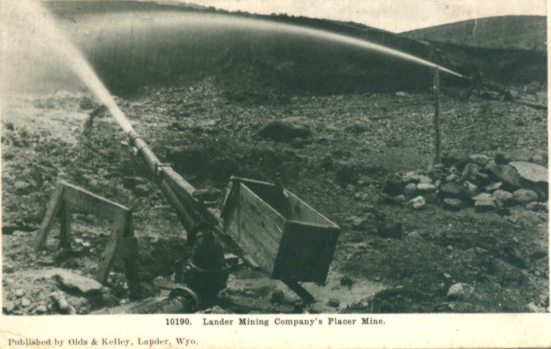
Lander Mining Company's Placer Mine, undated
Although gold was discovered by the Fremont Expedition of 1842, serious mining in Fremond County did not commence until 1870. Most gold mining in Wyoming was lode mining. Several placer mines, however, operated in the late 1800's near Baggs in southern Carbon County, near Miner's Delight and south of Lander. In 1907 the state geologist in his report to the Governor noted:
"The pumping out of the Miners Delight mine has again started placering in the old placers in the gulch below the mine, and old and new ground is being worked over with the usual satisfactory results, as this gulch has produced gold, almost continually, since tile mine was first discovered. Small placers have been operated all over the district this year, but no large works have been installed."A matter which brought Wyoming into the limelight for a brief spell was the reported salting of the Red Canon placers, twenty miles south of Lander, in Fremont County, after the work of investigating the ground had been going on for many months, and the matter was brought to the attention of the Governor, who ordered the State Geologist to investigate the matter thoroughly. This is being done, and the whole matter will, be turned over, and public report made, as soon as the work is completed, in order to set Wyoming right before the investing public and the mining world."
[Webmaster's note: tile ore, an earthy cuprite often mixed with iron oxide. Cuprite is a copper ore.]
One of the more famous examples of salting of mines in Wyoming was not with regard to gold but of diamonds. See Rawlins II.
In 1884, Lander became the county seat upon the formation of Fremont County.
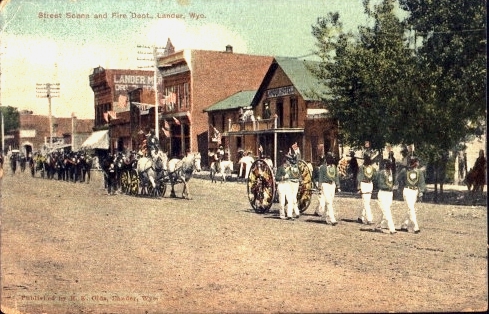
Fire Department Parade, Lander, 1909
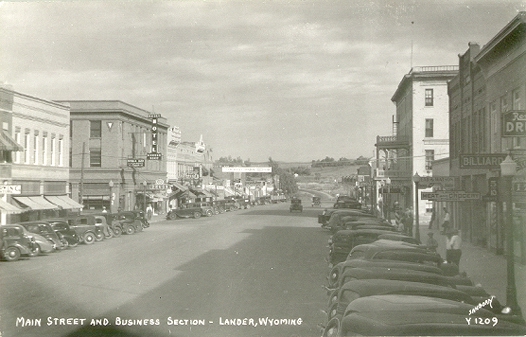
Lander, Wyo., 1930's
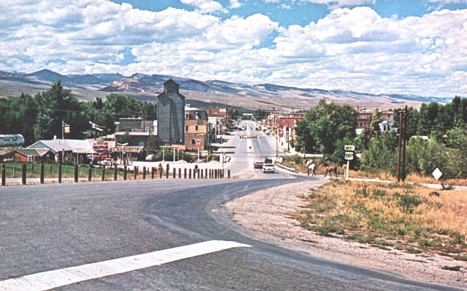
Lander, Wyo., 1970's
Wind River Photos continued on next page.

